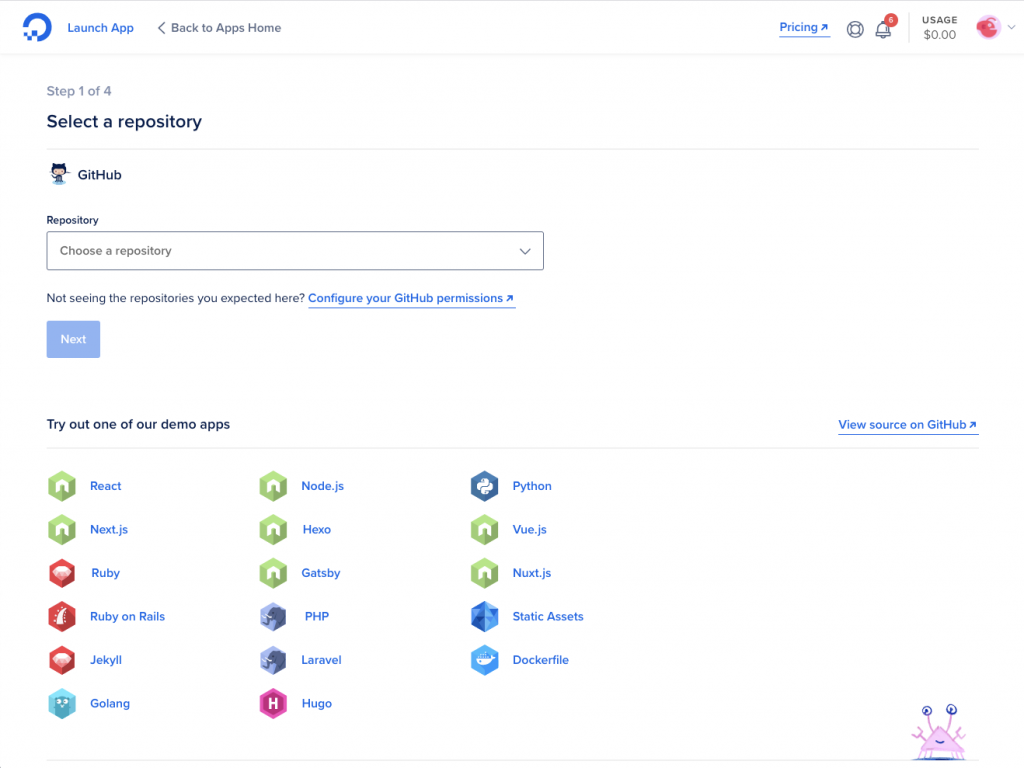DigitalOcean Unfurls Managed PaaS Environment Based on Kubernetes
DigitalOcean this week launched a platform-as-a-service (PaaS) environment based on Kubernetes designed from the ground up to be accessible to developers working in small-to-medium businesses (SMBs).
Raman Sharma, head of product marketing for DigitalOcean, said the DigitalOcean App Platform is a managed service through which the cloud service provider completely shields developers of container application using a lightweight PaaS from the underlying complexity of the Kubernetes environment.
Based on technology DigitalOcean gained by acquiring Nanobox last year, Sharma says DigitalOcean subsequently re-engineered that core platform to create a managed service based on Kubernetes that would appeal to SMBs because it’s a true cloud service versus a hosted platform that they need to maintain. The DigitalOcean App Platform, which includes a free tier for static sites, currently supports Python, Node.js, Go, PHP, Ruby and Hugo.
That service is intended to complement an existing managed Kubernetes service from DigitalOcean through which larger organizations typically deploy their own application development and deployment platforms, adds Sharma.
It’s not clear at what rate SMBs might be rushing to build and deploy container applications. In some cases, it’s been a chicken and egg issue. If Kubernetes is inaccessible then there’s not much chance SMBs that have limited skills and resources are going to build and deploy container applications. At the same time, however, DigitalOcean is betting many SMBs are under pressure to accelerate digital business transformation initiatives based on cloud-native technologies and platforms that will scale more easily as the business grows.
Longer-term, it’s not even clear to what degree developers will want to directly invoke Kubernetes versus relying on higher levels of abstractions that make it simpler to deploy code. Most SMB organizations would much rather focus on writing code that impacts their business than managing infrastructure, notes Sharma.
Historically, managed services have accounted for a small percentage of overall IT consumption. However, with the rise of the cloud and platforms such as Kubernetes, interest in managed services has risen sharply. There are more managed instances of Kubernetes deployed on public clouds than there are self-managed instances of Kubernetes running on-premises or in the cloud. It’s not clear if that will continue to be the case as internal IT teams acquire tools to automate many of the processes associated with provisioning one of the most complex platforms ever deployed in an IT environment.
Regardless of the path forward, many developers working for SMB applications will appreciate the inherent flexibility of containers, especially as the ability to create containers becomes embedded into the tools they commonly use to build applications. Sometime after that initial exposure, it becomes apparent there is a critical mass of containers that makes it worth the time and effort to implement Kubernetes as an orchestration engine. However, if Kubernetes becomes that much more accessible, the amount of time between when developers first deploy containers and start orchestrating them may be sharply reduced.
The challenge and the opportunity are to make building and deploying that first wave of container applications on Kubernetes a lot less intimidating than they are perceived to be today.



